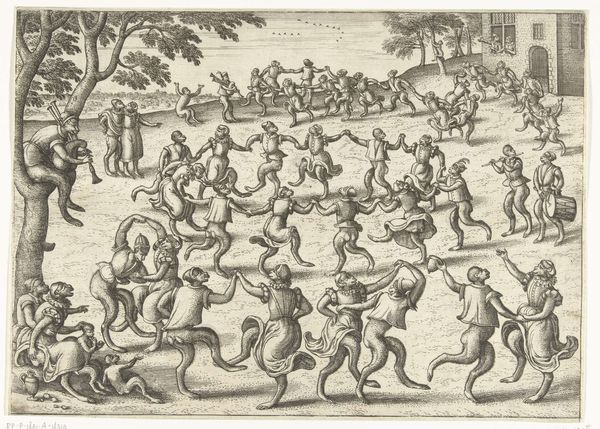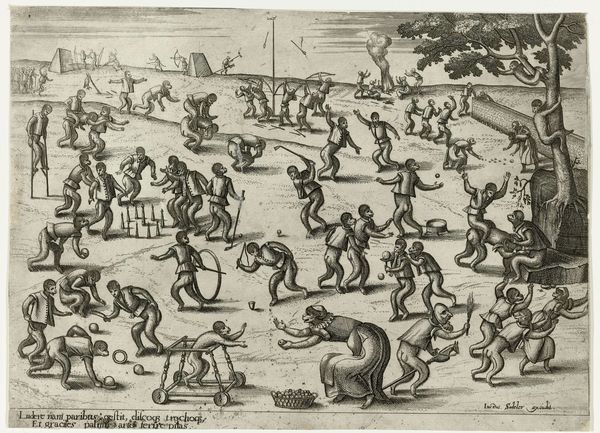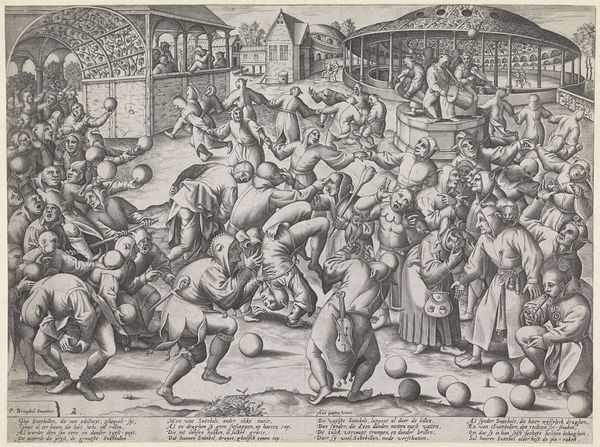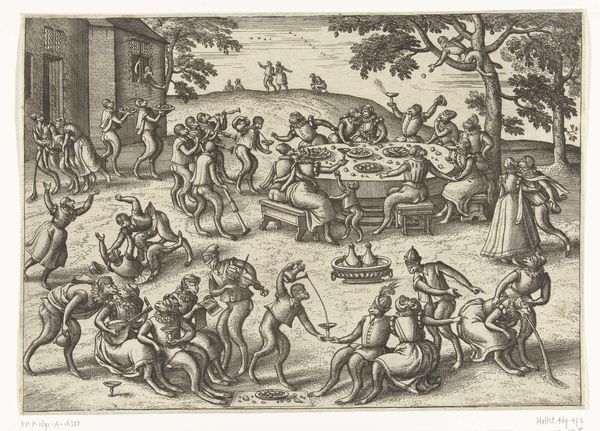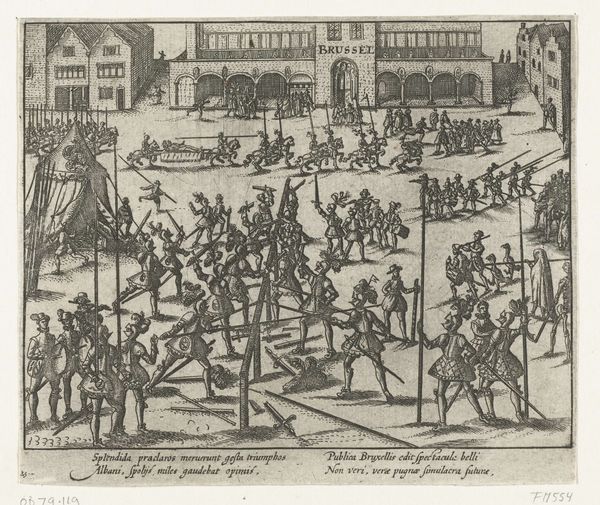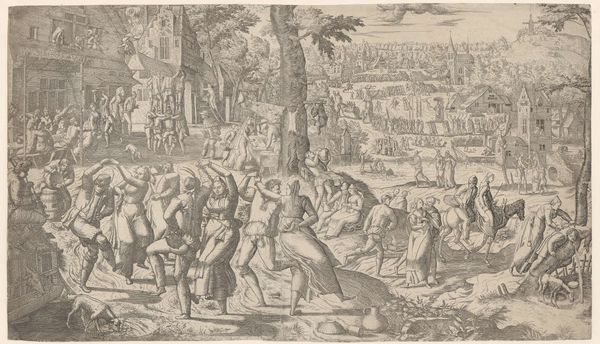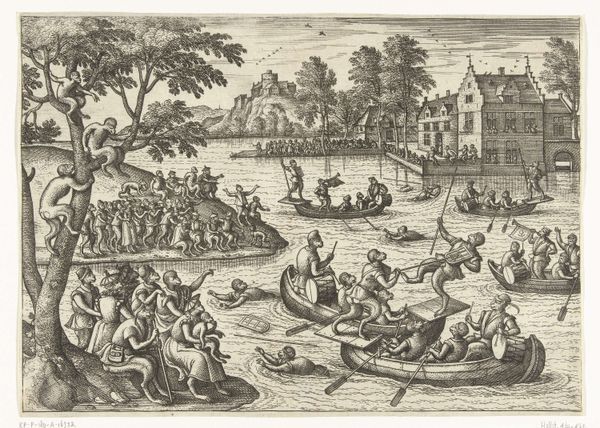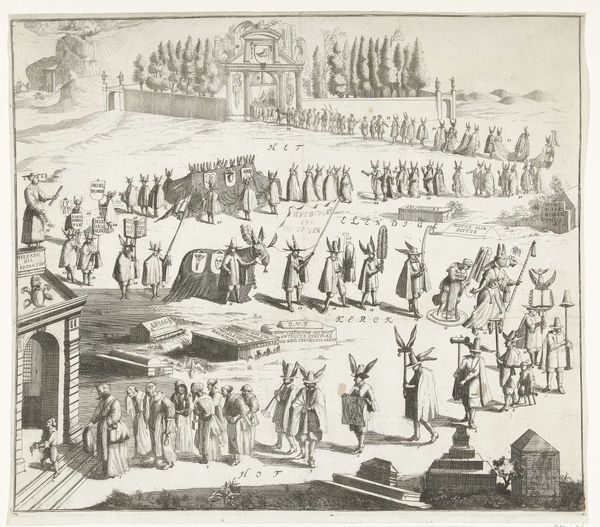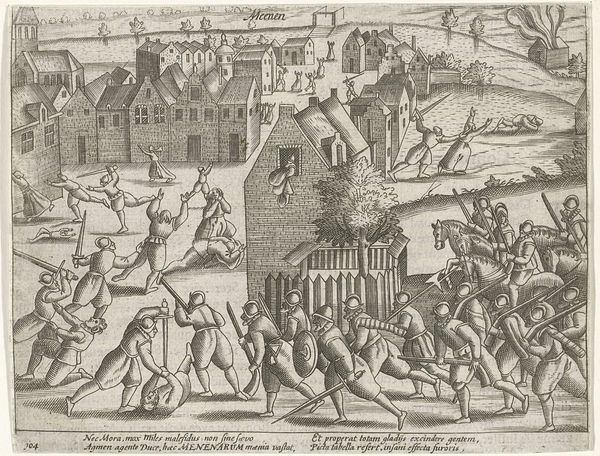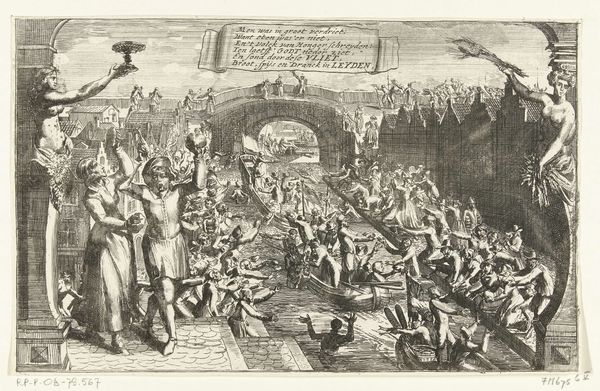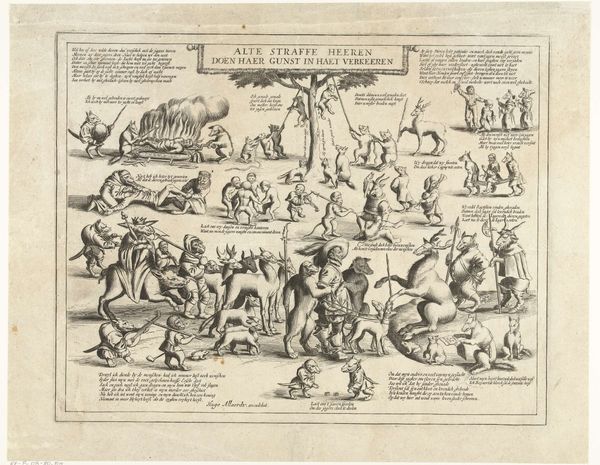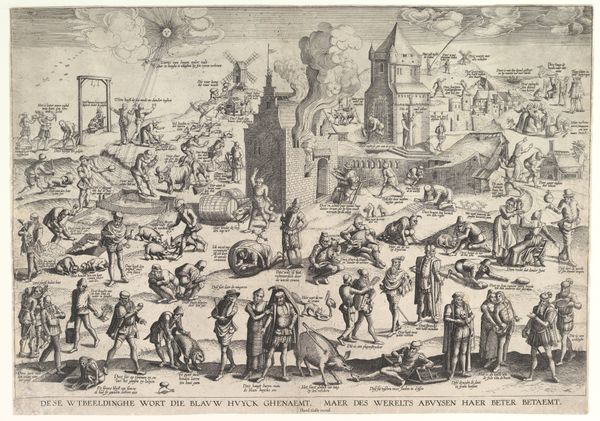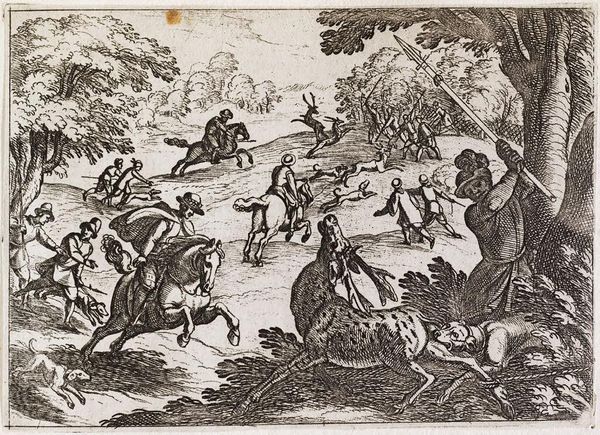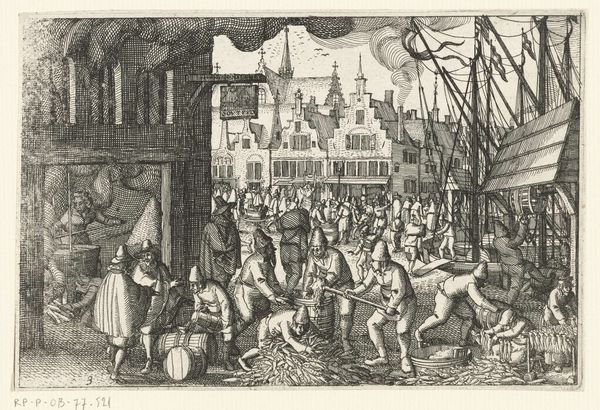
drawing, print, ink, engraving
#
drawing
#
narrative-art
#
pen drawing
# print
#
pen illustration
#
pen sketch
#
landscape
#
figuration
#
ink
#
genre-painting
#
northern-renaissance
#
engraving
Dimensions: width 294 mm, height 205 mm
Copyright: Rijks Museum: Open Domain
Editor: Here we have "Schaatsenrijden", or "Ice Skating," a drawing made with pen and ink sometime between 1545 and 1608 by Pieter van der Borcht the First. I'm really drawn to how active the piece is, even chaotic! What strikes you most about this work? Curator: I’m interested in the very act of production of this image. The repetitive mark-making, the hatching to create tonal variation – it speaks to a specific type of labor. What was the status of printmaking at the time? Was it seen as skilled craft or elevated art? Editor: I understand there used to be a stark separation between arts and crafts... But, beyond that, what statements are these material conditions of production making? Curator: Think about it: the labour inherent in producing these multiples democratized art. No longer confined to the elite, images could be distributed widely, influencing social discourse. The materials themselves - paper, ink, metal plate (for an engraving) – became conduits for spreading ideas beyond the walls of wealthy patrons' homes. How might this shift in production and accessibility change the role of the artist and their relationship to their audience? Editor: It's interesting to consider this work as both an aesthetic object and as a product with its own social context. That print could be about so much more than just what's depicted on the surface of the image itself. Curator: Exactly. By understanding the material conditions of art production, we can unravel its broader social and political significance. And the subject itself -- everyday people skating. What was the function of portraying a scene like this with the material means we just discussed? Editor: Thanks. That really helps to frame the work within its specific time. I'll never look at a "simple" drawing the same way again.
Comments
No comments
Be the first to comment and join the conversation on the ultimate creative platform.
